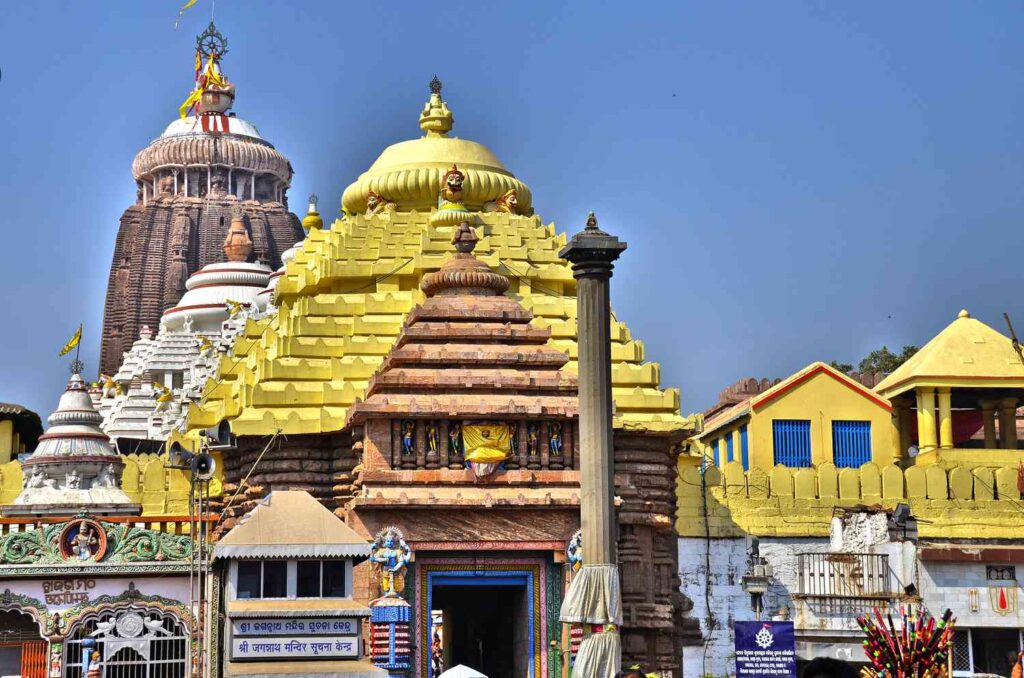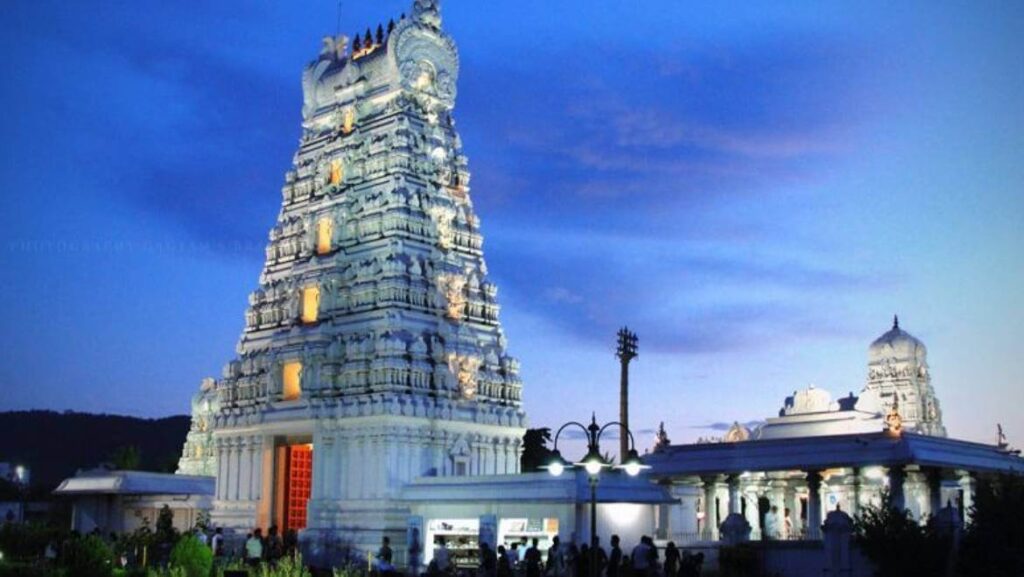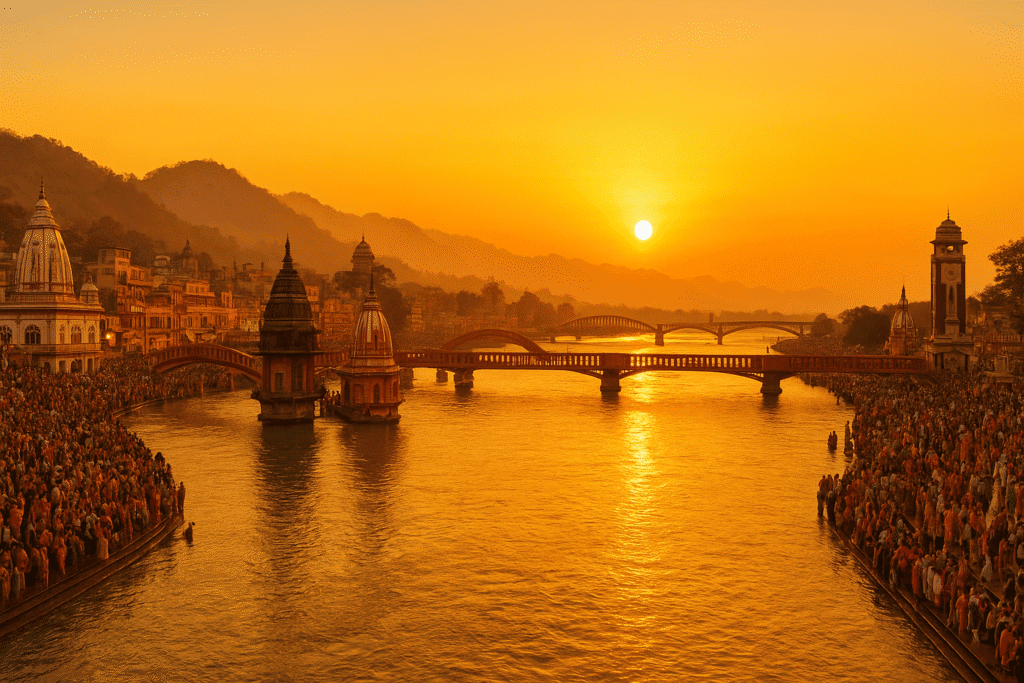
Nestled at the foothills of the Shivalik ranges where the holy Ganges River descends from the Himalayas to embrace the Indo-Gangetic plains, Haridwar stands as one of India’s most revered spiritual destinations. Known as the “Gateway to God” (Hari-dvāra) and historically called Mayapuri, this ancient city in Uttarakhand represents a living testament to thousands of years of Hindu tradition, drawing millions of pilgrims annually to its sacred ghats and temples. Here, mythology merges with reality, ancient wisdom coexists with modern development, and the eternal flow of the Ganges continues to carry the hopes and prayers of countless devotees seeking spiritual purification and divine blessing.
Ancient Origins and Sacred Foundation
Mythological Significance and the Descent of Ganga
The spiritual significance of Haridwar traces back to one of Hinduism’s most cherished legends – the descent of the sacred Ganges from the heavenly realms to earth. According to the Ramayana and Puranic traditions, King Bhagiratha, descendant of the illustrious Suryavamsha dynasty, performed intense penances to bring the celestial river from heaven to liberate 60,000 of his ancestors from Sage Kapila’s curse. Understanding the destructive potential of Ganga’s divine force, Lord Shiva captured the river in his matted locks and released it gently at this very location, making Haridwar the first terrestrial point of contact between the heavenly Ganges and earthly realm.
This divine intervention established Haridwar as a primordial sacred space where heaven and earth intersect, making its waters uniquely potent for spiritual purification and ancestral salvation. The city’s designation as one of the Sapta Puri (seven cities of liberation) stems from this cosmic connection, as documented in ancient texts including the Garuda Purana, which declares: “Ayodhya, Mathura, Haridwar, Kasi, Kanchi, Avantika and Dwaraka are the seven holy places”.
The Amrita Legend and Kumbh Origins
Haridwar’s status as one of four Kumbh Mela sites derives from the cosmic churning of the ocean (Samudra Manthan) described in Puranic literature. When gods and demons churned the primordial ocean to extract amrita (the nectar of immortality), drops of this divine elixir fell at four terrestrial locations: Haridwar, Ujjain, Nashik, and Prayagraj. The specific location where amrita touched earth in Haridwar is believed to be Brahma Kund at Har Ki Pauri, transforming this ghat into the city’s most sacred bathing spot.
Historical Chronicles Through the Ages
Ancient References and Archaeological Evidence
Archaeological excavations reveal continuous human habitation in the Haridwar region dating back to approximately 5000 BCE, making it potentially one of India’s oldest cities. The earliest documented historical account comes from Chinese scholar Huan Tsang, who visited in 629 CE during Emperor Harshavardhan’s reign and recorded the city as “Mo-yu-lo,” describing ancient forts and temples that predated his arrival.
Ancient Hindu scriptures extensively reference Haridwar under various names reflecting different historical periods. The Mahabharata’s Vana Parva mentions Gangadvāra (Haridwar) and nearby Kankhal as sacred tirthas, while the Skanda Purana and Garuda Purana enumerate it among the Sapta Puri – seven cities that grant moksha (liberation). The Nilamata Purana describes the region’s spiritual significance, establishing its importance in ancient Kashmir’s religious traditions.
Medieval Transformations and Royal Patronage
The Mauryan Empire (322-185 BCE) and later Kushan dynasty (1st-3rd centuries CE) contributed significantly to Haridwar’s early development. However, like many North Indian cities, Haridwar faced disruption during medieval invasions, notably suffering under Timur Lang’s assault in 1398 CE, though it remarkably retained its spiritual vibrancy.
The Mughal period brought renewed prosperity and imperial recognition. Emperor Akbar took particular interest in the city, maintaining special arrangements to have sealed jars of Ganges water transported to wherever his court was stationed, calling it “the water of immortality”. Ain-i-Akbari, compiled by Abul Fazl in the 16th century, describes Haridwar extending eighteen kos in length, with massive pilgrim assemblies gathering during Chaitra Dashami.
The foundation of modern Haridwar is attributed to Maharaja Man Singh of Amber, who renovated the ghats at Har Ki Pauri in the 16th century. His ashes were later immersed in Brahma Kund, establishing a tradition continued by subsequent rulers and devotees throughout the centuries.
Sacred Geography: The Panch Tirth System
Har Ki Pauri – The Crown Jewel
Har Ki Pauri (literally “steps of God Hara/Shiva”) represents the epicenter of Haridwar’s spiritual magnetism. Constructed by King Vikramaditya in the 1st century BCE to commemorate his brother Bharthari, who meditated and achieved moksha at this location, the ghat houses the most sacred Brahma Kund where Lord Vishnu’s footprint is believed to be permanently preserved in stone.

Within Har Ki Pauri lies the area called Brahmakund, where the evening Ganga Aarti transforms the ghat into a transcendent theater of devotion. This daily ceremony, initiated by Pandit Madan Mohan Malviya in 1916 and organized by the Shri Ganga Sabha, creates a spiritual spectacle where thousands of devotees witness priests offering elaborate fire ceremonies to Mother Ganga. The synchronized chanting, massive oil lamps, and floating diyas create an ethereal atmosphere that has remained essentially unchanged for over a century.
The Five Sacred Pilgrimage Sites
Hindu tradition recognizes five primary pilgrimage sites within Haridwar, collectively known as Panch Tirth: Gangadwar (Har ki Pauri), Kushawart (Ghat in Kankhal), Bilwa Tirtha (Mansa Devi Temple), Neel Parvat (Chandi Devi Temple), and associated sacred spaces. This pentagonal sacred geography ensures that pilgrims can complete comprehensive spiritual purification within the city’s boundaries.
A traditional Sanskrit verse declares: “Haridvāre Kuśāvarte Bilvake Nīla parvate snatvā Kanakhale tīrth punarjanma na vidyate” – “Bathing at Haridwar’s Kushawart, Bilva, Neel Parvat and Kankhal tirtha, one escapes rebirth”. This promise of liberation continues to attract countless devotees seeking ultimate spiritual release.
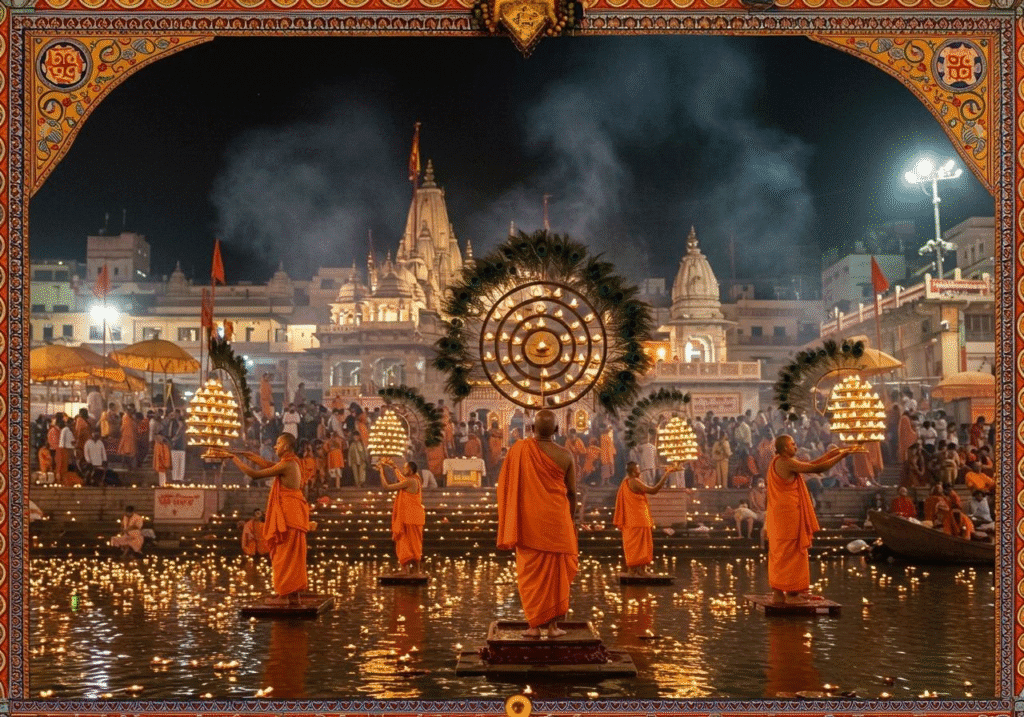
Temple Architecture and Spiritual Landmarks
Maya Devi Temple – The Ancient Shakti Peeth
The Maya Devi Temple, dating to the 11th century CE, holds unique significance as both Haridwar’s patron deity shrine and one of the 51 Shakti Peeths where parts of Sati’s dismembered body fell following her self-immolation.
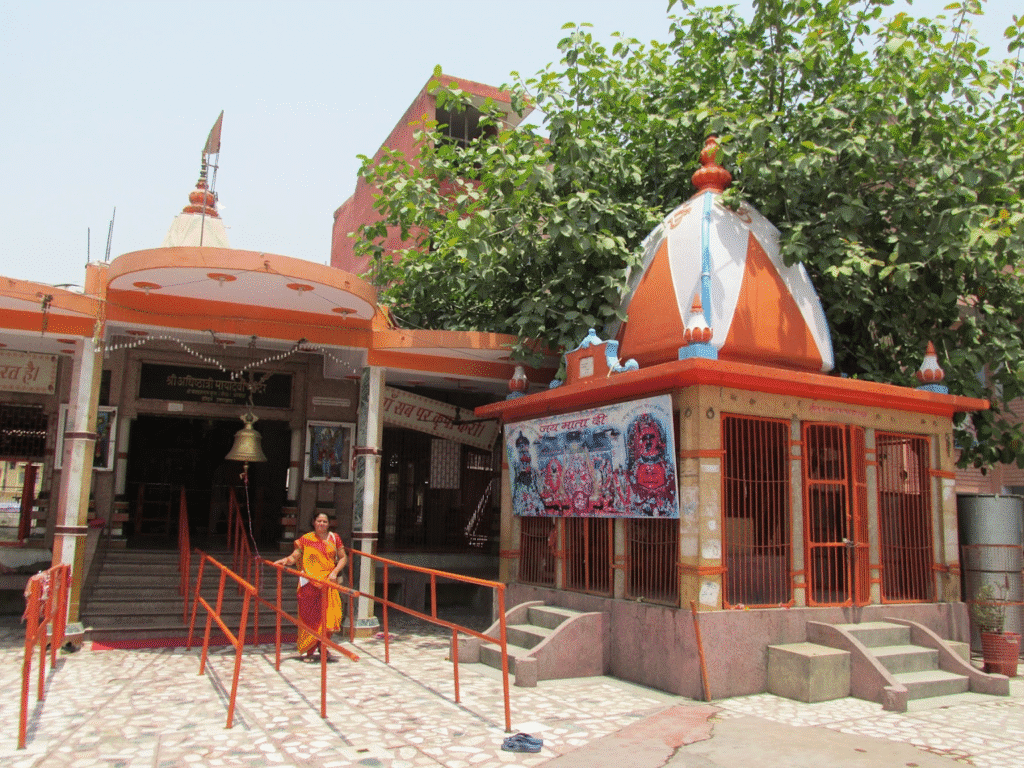
According to tradition, Sati’s heart and navel landed here, making the temple a powerful center of divine feminine energy and giving the ancient city its name Mayapuri.
The temple houses a three-headed, four-armed idol of Goddess Maya, representing different aspects of divine energy through classical stone-carving techniques preserving traditions from the early Gupta period. The temple’s architectural design reflects traditional Indian temple construction, with its central sanctum surrounded by smaller shrines dedicated to various deities.
Hilltop Temples: Chandi Devi and Mansa Devi
Perched atop Neel Parvat, the Chandi Devi Temple commemorates Goddess Chandi’s victory over the demon generals Chanda and Munda, as narrated in the Skanda Purana. Constructed in 1929 by Kashmir’s King Suchat Singh, the temple houses a murti believed to be installed by Adi Shankaracharya in the 8th century CE. The temple exemplifies classic Himalayan temple architecture with stone pillars, arches, and intricate deity idols.
The Mansa Devi Temple, situated atop Bilva Parvat, is dedicated to the “wish-fulfilling goddess” and features two primary idols – one with three mouths and five arms, the other with eight arms. Built in the 17th century following the Nagara architectural style, the temple’s curvilinear spires (shikhara) dominate the skyline. Modern ropeway facilities have democratized access to both hilltop temples, enabling elderly and physically challenged devotees to experience darshan without the arduous climb.
Festival Celebrations and Sacred Gatherings
The Kumbh Mela – Humanity’s Largest Peaceful Assembly
Every 12 years, Haridwar transforms into the world’s largest peaceful gathering during the Kumbh Mela, when millions of pilgrims converge to bathe in the Ganges during astrologically auspicious moments. The festival recreates the mythological moment when amrita touched earth, offering participants the opportunity to partake in divine nectar through sacred bathing.
The Ardh Kumbh (half Kumbh) occurs every six years, while the Purna Kumbh happens when Jupiter completes its 12-year revolution, marking major astrological events. These gatherings demonstrate Haridwar’s unique capacity to accommodate vast populations while maintaining spiritual sanctity and logistical functionality. UNESCO recognized Kumbh Mela as an “Intangible Cultural Heritage of Humanity” in 2017, acknowledging its global cultural significance.
Annual Spiritual Celebrations
Kanwar Yatra represents one of contemporary Hinduism’s largest annual pilgrimages, with millions of devotees (kanwariyas) traveling hundreds of miles to collect sacred Ganges water in ornate pots and carry it to Shiva temples across North India. Haridwar serves as the primary source point for this massive movement of faith, creating a need for specialized infrastructure including dedicated pedestrian routes, rest facilities, and crossing bridges to manage the enormous crowds.
Traditional festivals like Ganga Dussehra, Kartik Purnima, and Makar Sankranti witness special celebrations in Haridwar, with extended Ganga Aarti ceremonies, mass feeding (bhandaras), and cultural programs showcasing the city’s role as a living repository of Hindu tradition.
Modern Development and Infrastructure
Industrial Growth and Urban Transformation
Modern Haridwar has evolved into a significant industrial center while maintaining its spiritual essence. The establishment of BHEL (Bharat Heavy Electricals Limited) in 1964 and SIDCUL (State Industrial Development Corporation of Uttarakhand) industrial estate has brought economic prosperity, with over 650 companies currently operating in the region and providing employment to thousands.
Haridwar is part of the Smart Cities Mission, focusing on technology integration for better urban management and services. New infrastructure projects include road improvements, ghat beautification, waste management systems, and pedestrian facilities specifically designed for the millions of annual pilgrims.
Tourism Infrastructure and Connectivity
The city enjoys excellent connectivity through National Highway 58 connecting Delhi to Mana Pass, ensuring road access to major Indian cities. Haridwar Railway Station provides direct connections to metropolitan centers including Delhi, Mumbai, Kolkata, and Chennai. Jolly Grant Airport in Dehradun (35 km away) serves domestic flights, while Indira Gandhi International Airport in New Delhi (220 km) provides international connectivity.
Recent infrastructure investments under the India Infrastructure Development Investment Program for Tourism (IDIPT) focus on creating dedicated pilgrim routes, improving facilities along kanwar pathways, and enhancing overall tourist infrastructure while preserving the city’s cultural heritage.
Environmental Challenges and Conservation Efforts
Ganges Water Quality Concerns
Despite its sacred status, the Ganges faces significant pollution challenges in Haridwar. Recent assessments by the Uttarakhand Pollution Control Board classified the river water as ‘B’ category – unsafe for drinking but suitable for bathing. This classification, based on pH levels, dissolved oxygen, biological oxygen demand, and total coliform bacteria, reveals concerning contamination levels primarily linked to human waste and industrial effluents.
The pollution stems from multiple sources: untreated sewage discharge, industrial waste, agricultural runoff containing fertilizers and pesticides, and religious activities including mass bathing and ritual offerings. These combined factors pose significant threats to aquatic biodiversity, with studies showing declining fish populations and ecosystem degradation.
Conservation Initiatives and Future Challenges
The Namami Gange Programme and other government initiatives aim to address river pollution through infrastructure development, sewage treatment plants, and stricter monitoring. However, effective conservation requires comprehensive approaches addressing reduced water flow due to dams and diversions, which particularly affect the stretch between Haridwar and Allahabad during lean seasons.
The National Green Tribunal has mandated maintaining minimum ecological flows of 15-20% of average lean season flow in all rivers, though experts argue this may not be sufficient for effective river health. Climate change further complicates conservation efforts by reducing natural water flows and diminishing the river’s capacity to absorb pollutants.
Cultural Heritage and Educational Legacy
Gurukul Kangri University – Bridging Ancient and Modern
Established in 1902 by Swami Shraddhananda according to Arya Samaj principles, Gurukul Kangri University represents one of India’s pioneering attempts to synthesize ancient Vedic education with modern academic disciplines. The university’s curriculum encompasses Sanskrit literature, Ayurveda, philosophy, journalism, and contemporary sciences, creating graduates versed in both traditional wisdom and modern knowledge systems.
Mahatma Gandhi visited the university three times, including extended stays during the 1915 Kumbh Mela and 1916, recognizing its innovative educational approach. This endorsement highlighted the institution’s successful integration of spiritual values with practical education.
Genealogical Records and Cultural Preservation
For centuries, pandas (hereditary priests) in Haridwar have maintained detailed genealogical records called Vahis for Hindu families across North India. These massive ledgers, updated during each family’s pilgrimage visit, represent one of the world’s most comprehensive family tree documentation systems, preserving lineage information spanning multiple generations and serving as invaluable historical records for understanding demographic patterns and cultural continuity.
Contemporary Challenges and Sustainable Development
Balancing Tradition and Progress
Modern Haridwar faces the complex challenge of balancing spiritual preservation with necessary development. The city maintains strict vegetarian protocols by law, with meat, fish, and egg sales prohibited within city limits since 2002 – a ban upheld by the Supreme Court in 2004. This regulation preserves spiritual purity while demonstrating how traditional values can be maintained through modern legal frameworks.
Urban planning challenges include restricted physical growth due to hills, forests, and water bodies, leading to high-density development in old areas without proper infrastructure, unauthorized constructions, and growth of slums along the river. The City Development Plan addresses these issues through comprehensive infrastructure development, affordable housing initiatives, and regulated urban expansion.
Future Sustainability
The ongoing transformation of Haridwar through various development projects aims to enhance infrastructure while preserving cultural heritage. Key focus areas include:
Smart city initiatives integrating technology for better urban management
Environmental restoration through Ganges cleaning and waste management
Tourism infrastructure development balancing pilgrim needs with conservation
Economic diversification creating employment while maintaining spiritual character
The success of these initiatives will determine whether Haridwar can serve as a model for sustainable spiritual tourism, demonstrating how ancient sacred sites can adapt to contemporary challenges while preserving their essential spiritual character.
Conclusion: The Eternal Gateway
Haridwar represents far more than a pilgrimage destination – it embodies the living intersection of mythology, history, spirituality, and human aspiration that defines Hinduism’s enduring appeal. From its ancient origins as the earthly landing point of the celestial Ganges to its contemporary role as India’s premier spiritual gateway, the city continues to fulfill its designation as the “Gateway to God.”
Whether experienced through the transcendent flames of evening Ganga Aarti, witnessed in the overwhelming devotion of Kumbh Mela crowds, or felt in quiet contemplation within its numerous ashrams and temples, Haridwar offers every visitor – from devoted pilgrim to curious traveler – the opportunity to connect with something larger than individual existence. The city’s continuing ability to inspire millions of annual visitors demonstrates that the sacred geography established by ancient sages remains as relevant and transformative today as it was millennia ago.
As modern India navigates the delicate balance between tradition and development, Haridwar stands as a testament to the possibility of preserving spiritual heritage while embracing contemporary progress. The challenges ahead – from environmental conservation to sustainable tourism management – require innovative solutions that honor both ancient wisdom and modern needs.
In Haridwar, the eternal and temporal merge in the sacred waters of the Ganges, offering every soul the possibility of purification, liberation, and ultimate homecoming to the divine source. Here, where the Himalayas meet the plains and heaven touches earth, the ancient promise of spiritual transformation continues to flow as eternally as the sacred river that defines this holy city.
The Gateway to God remains open, welcoming all who seek the confluence of faith and experience, tradition and renewal, in the timeless embrace of the sacred Ganges and the ancient city that guards its passage from the divine realm to the world of humanity.


